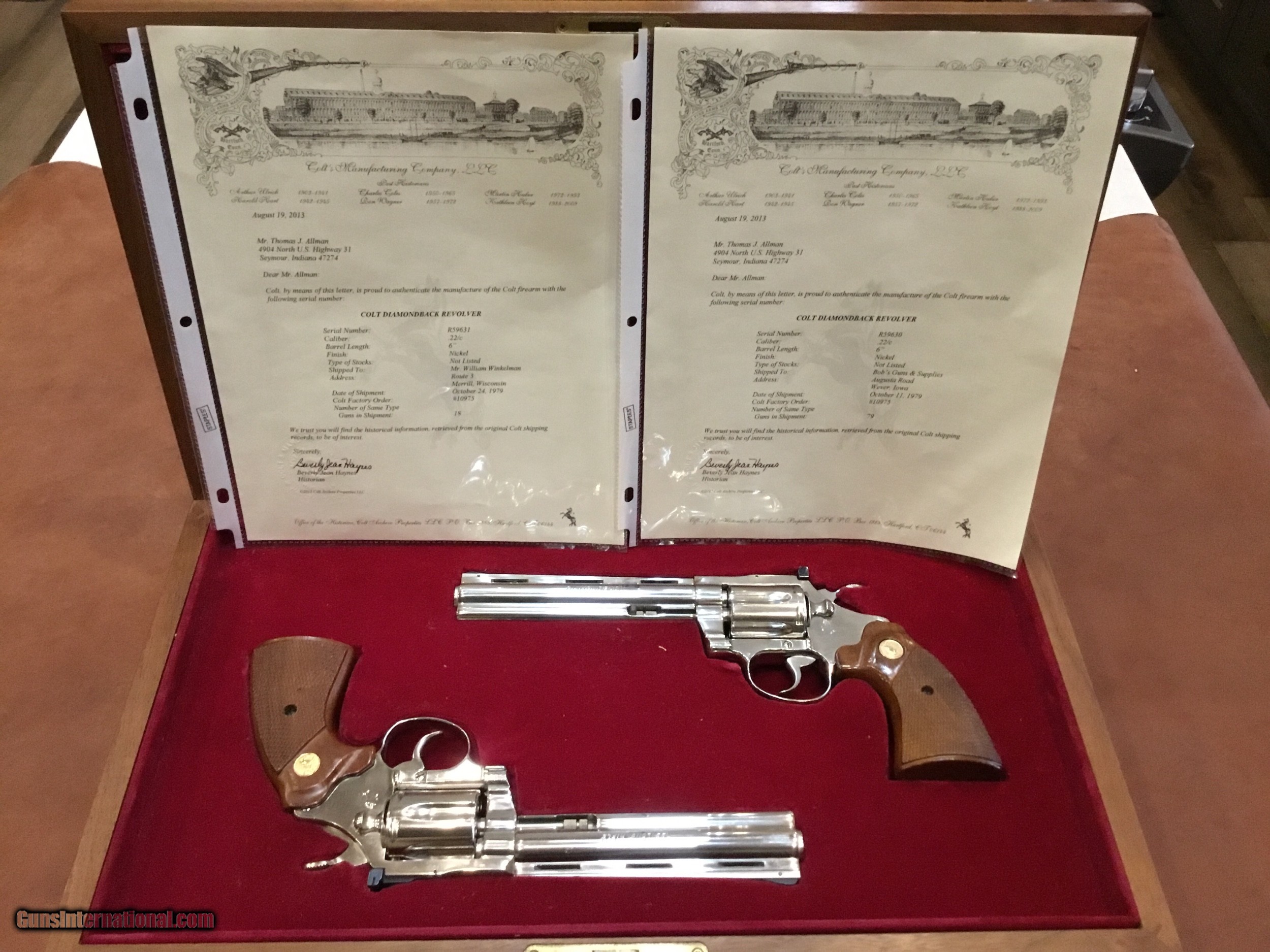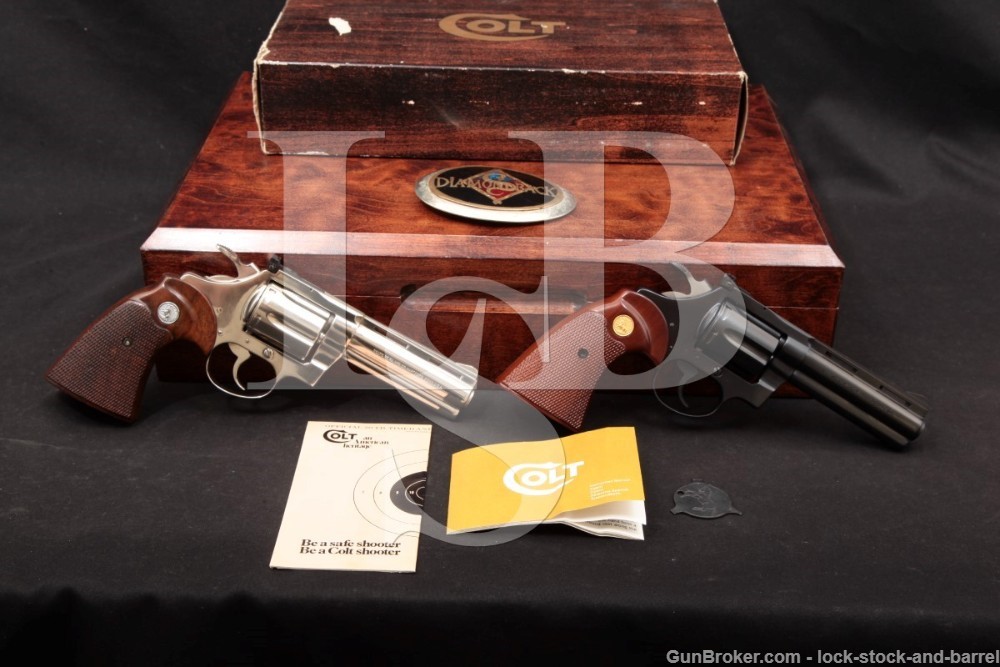
I hope that at some point Colt sees their way clear to reintroducing this fine premium revolver to their line. I am, unabashedly, a fan of the Diamondback revolver. Due to the diamondback's greater weight, however, I prefer to carry a lighter, alloy framed, Colt Cobra.

38 snubby ever built once the whistle blows. 38 Special Diamondback to be perhaps the most effective. For that purpose it is stoked with Glaser Blue. The 4 inch nickel Diamondback is my home defense gun of choice. 38 Diamondback gets the most use plinking at casual targets such as tin cans and clay pigeons propped against a dirt hillside. However, they also shoot the budget Winchester/USA and Remiongton/UMC 130 grain FMJ factory loaded ammunition with quite satisfactory accuracy. 38 Special Diamondbacks are usually fed handloads using the 140 grain Speer JHP bullet. My 4 inch nickel and 2.5 inch and 6 inch blue. 22 revolvers, it is not particular about ammunition. Sometimes that group size can be cut to 1 inch. 22 Diamondback will shoot 6-shot, 1.5 inch groups from a 25 yard bench rest all day, if the shooter is up to it. There is not much difference between the accuracy of a 4 inch barrel and a 6 inch barrel, but the longer sight radius and greater weight of the 6 inch barrel gives it the edge in practical accuracy. The SA trigger pulls of these guns runs about 3 pounds. Beginners usually prefer the balance of the 4 inch barrel, but soon graduate to the 6" tube. 38 Special models due to the smaller holes in the barrel and cylinder.ĭue to its excellent sights, good trigger, fine balance, safe action, and moderate size a Diamondback makes a nearly ideal training revolver for a new shooter. 22 Diamondbacks are about 3 ounces heavier than equivalent. Its action is generally superior to those of competing DA revolvers. The all steel Diamondback came in bright nickel and polished Colt Blue finishes. Its internal lockwork is of the same basic design as the Python and uses the traditional Colt "V" shaped mainspring. The grips provided on guns with 4 and 6 inch barrels are checkered walnut target type. Diamondbacks came with a fully adjustable rear sight, usually mated with a ramp front sight. The hammer has a wide, serrated, spur and the trigger is a grooved target type. The top strap of the Diamondback's frame is a flat top target type. The Diamondback is, visually, a miniature Python.

#COLT DIAMONDBACK SERIAL NUMBERS FULL#
The top of the barrel wears a ventilated rib, and there is a full length lug beneath, as per the Colt Python. 4 inch barrels are the most commonly seen length on the used market. 38 Special revolvers.īarrel lengths were initially 2.5 inches and 4 inches, and a 6 inch barrel option was soon added to the line.

38 Special were the common Diamondback calibers.38 Special +P loads are safe for use in all Diamondback. The Diamondback is an expensive revolver, but it is definitely worth the price.Ĭalibers included. 22 LR caliber, and 20% for nickel (instead of the standard blue) finish. Anyone looking for a good used 4 inch or 6 inch Diamondback in mint condition should expect to pay about $650. The Diamondback's relatively high price has always limited its sales, but not its appeal.ĭiamondbacks are still available on the used market. By 1986, the last year of production, the list price had risen to $461. The Diamondback was introduced with a list price of $95 dollars.

Like its Colt half-brothers the Detective Special and Police Positive, also built on the Colt "D" frame, it was a 6-shot revolver with a swing out cylinder and a Positive Lock action. It was intended to be a deluxe model and included special features such as a target hammer, ventilated rib, fully adjustable target quality sights, and full length barrel underlug. Colt introduced the Diamondback double action revolver in 1966.


 0 kommentar(er)
0 kommentar(er)
